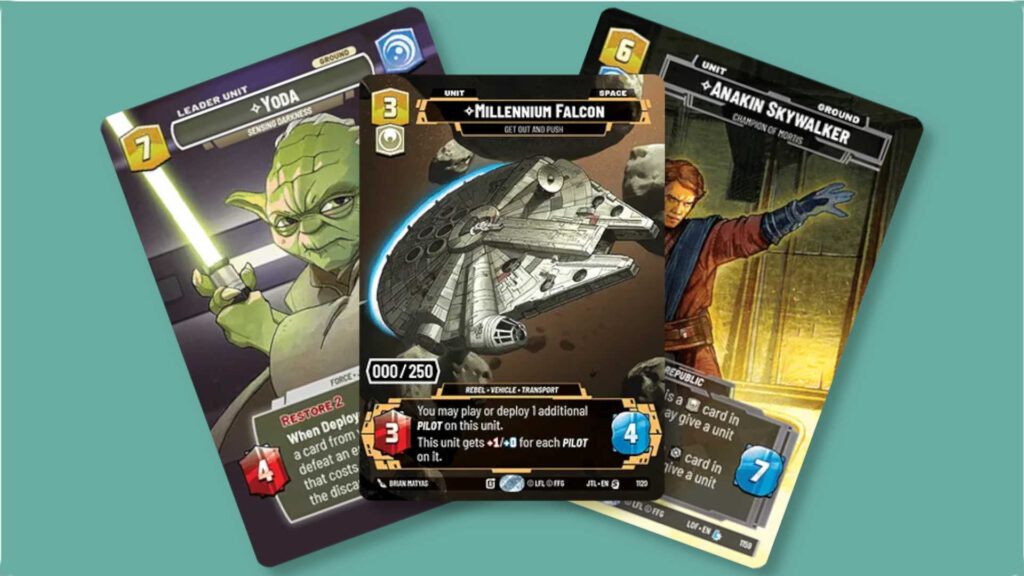A year ago I started a YouTube channel, TheMaskedHero, because I wanted to create Marvel Champions gameplay content that matched my own sensibilities. Instead of long, unbroken footage, I wanted to provide an abridged version of the featured scenarios. But as the weight of time needed to produce this work came into focus, I added New Player Guides to my arsenal. This came from the lack of easily discoverable content tailored to a beginner’s experience. And a recent addition to the series I began providing example decks, as the next steps for the weekly featured hero.
The hunt for these examples every week brought attention to the fact that while MarvelCDB intends to feature beginner approachable decks, the number of products required to build decks under the beginner tag can often require a minimum investment into eight to twelve different campaign boxes and/or hero packs. This has led to an idea championed by a viewer of my work and deck builder on MarvelCDB named AbisMal, that they titled the “4-Pack Challenge.” Today, I’d like to examine this deckbuilding philosophy and some of the decks put forward by AbisMal, in an effort to highlight the value that approachable beginner content can have for this game.
Table of Contents
ToggleThe 4-Pack Challenge
At its most basic level, The 4-Pack Challenge is looking to minimize the numbers of products needed to upgrade a given hero. The sweet spot, as the name would imply, being a combined use of four campaign boxes and/or hero packs, outside of the Marvel Champions Core Set. This is a great layer to put on top of the new player acquisition through the pre-built hero decks, as it takes the hero you bought off the shelf and gives you a roadmap, opening up the card pool in chunks instead of a flood.
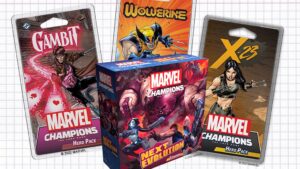
This is not a concept that was invented recently. Digging into existing decks built by user Brian-V, such as “Further, Faster, Baby!” and Deft Webs show that this is something that is being built towards under the “beginner” tag, but lacked the branding and unified vision to give the design principle traction. I love that this is starting to come into focus within the community, even if presently only in small numbers. As someone who came into this game several waves in, the card acquisition and deck building side of Marvel Champions was very daunting in the beginning. It was unclear what the proper next steps were, and trying to formulate decks with my favorite heroes felt unapproachable.
Psionic Skills that Kill
In AbisMal’s Psylocke build, Psionic Skills that Kill 2, we’re provided with a deck that utilizes the versatile hero’s ability to hand out status cards and back them up with ally recursion that can help to defend, thwart, and attack problems, as needed. By moving out of the preconstructed Justice deck into Leadership, we can now focus on enhancing allies through the use of Psychic Kicker, a trait-locked event that provides additional uses from characters such as Nick Fury and Gentle, while also bulking up their basic powers until the end of the phase.
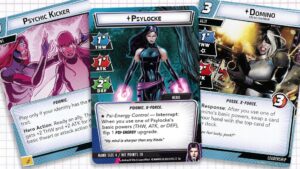
We should also admire that this deck is not solely focused on the interactions it has with its ally swarm, advising right up front that Psylocke is already a capable enough hero that she does not need assistance to still be dealing out damage and defending herself. Psylocke is hampered by her small hand size, which is supplemented by her psi-weapons providing resources. As such, what we want is to maximize the quality of the cards that she’s drawing every turn, and AbisMal accomplishes that within the restricted card pool.
Lists such as this show that it doesn’t take a lot to enhance what a hero is doing with only the addition of seven to ten cards borrowed from other sources. This takes the barrier to entry from a vast card pool down to the additions from NeXt Evolution, Phoenix, and Storm to your collection.
Charging Legion
Next up, let’s look at the Magik deck provided, titled Charging Legion. Built around interactions with Legion’s response trigger, this deck capitalizes on Magik’s top-deck manipulation and gives additional use to Scrying and Stepping Disc. The use of player side schemes, Build Support and Superpower Training, give the extra boost of consistency to ensure that we have access to powerhouses such as Limbo, Magik’s Crown, Mystical Armor, Soulsword, and The Sorcerer Supreme in, as needed, every scenario.
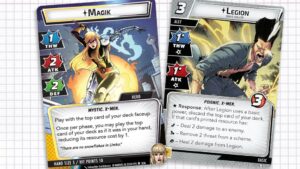
If there wasn’t already a good enough reason to be buying into the Age of Apocalypse campaign box, where we find Magik, a deck like this really sells how powerful she can be when provided with the appropriate tools. A lot of what makes this deck powerful is what Illyana is already providing. She can alter the top of her deck with full knowledge while in hero form and augment her basic powers, through the use of identity-specific upgrades. But it’s the addition of Wolverine, Attack Training, and Sidearm that take this hero up to the next level, while highlighting the value of adding the Mutant Genesis and NeXt Evolution boxes to your collection.
Waylay and Lay Waste
Justice is not admittedly the first place that I would have put Nightcrawler when recommending a deck to a new player. That said, Nightcrawler came with in a Protection deck, the aspect that most requires an acquired taste to pilot as a rookie. But the Waylay and Lay Waste deck prioritizes the thwart event, Scout Ahead, that Nightcrawler naturally carries within his kit and adds cards such as For Justice! and Heroic Intuition to enable Waylay, a card that I was quick to write off, as a vital piece of a game plan. The addition of Bishop, Dazzler, and Professor X from the Gambit hero pack, and offered staples The X-Jet and Utopia from Storm, help to break Kurt from his typecast Protection deck into something with more agency during the player phase.
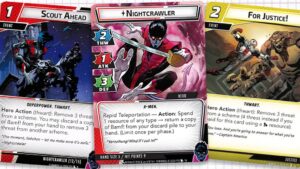
No question, I had biases when I originally started analyzing perspective example decks, because I felt like the power level of each was being hampered due to trying to fit into this niche deckbuilding limitation. That’s coming at the idea of power level with the wrong perspective. A new player’s experience is limited by their known card pool; give them small upgrades to cards they already have and they will feel their games improving, even if only on a subconscious level.
Looking back on my early months with the game, resources that were blatantly called out as new player-friendly would have been so helpful in navigating my journey through the game. As such, I’d like to thank AbisMal for taking a concern that I vocalized and taking the initiative to make what will hopefully be a positive change for onboarding new players to Marvel Champions. And I hope creating awareness can motivate others to build around this same limitation.
So much focus can be put on what an advanced and expert play experience looks like, to the detriment of new players entering the game. While I do admire how streamlined the process can be to get into Marvel Champions, if you’re not familiar with the form of card release present in living games such as this, it becomes very imposing. It’s vital that we provide the proper tools to enable players at all collection levels to enjoy our beloved game. Until next time, thanks for reading.
Want more Marvel Champions content? Head here to see it all.



